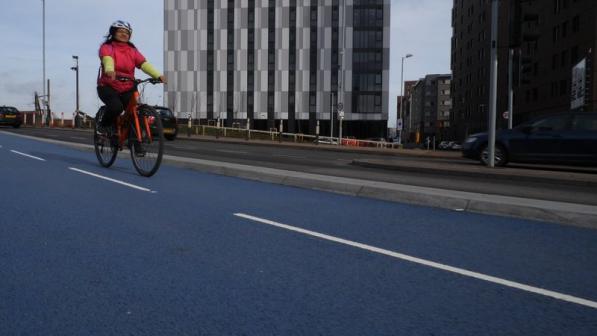‘Beauty’ alone won’t solve the climate crisis

The Government is strongly in favour of ‘beauty’. And who wouldn’t be? I certainly am. It’s one of those motherhood-and-apple-pie things that surely everyone agrees with.
In recent years though, ‘beauty’ has become something of a ministerial obsession. Some ministers seem to think you can build pretty much anything, pretty much anywhere – motorways, coal mines, airports, power stations – so long as they are ‘beautiful’.
I recall a recent transport minister opening his address to a meeting of environmental campaigners by declaring: “I am an aesthete.” He wanted to build lots of roads, but he also wanted them to be in tune with nature – which meant providing plenty of trees and badger crossings, and even cycle crossings (so that kept me happy!).
He wanted to build the most beautiful roads possible. I recall an energy minister saying something similar about nuclear power stations.
Two years ago, the Government set up the Building Better, Building Beautiful Commission. It was co-chaired by the late Professor Roger Scruton and Nicholas Boyes Smith, founder of the charity Create Streets. Its final report to Government, Living with Beauty, was published two years later, and makes some very sensible recommendations.
It talks about the importance of creating places (not just houses), integrating nature into the built environment, regenerating ‘left-behind’ places, the importance of local democracy, and the achievement of ‘gentle densities’, where people live close together without requiring high-rise blocks, and where it is therefore easy to get around without depending on cars.
Highway design can help reclaim streets for people, with the provision of cycle infrastructure or public transport supporting more humane and popular places. This now needs to become the norm, not the exception
Living with Beauty report by the Building Better, Building Beautiful Commission
It notes how “highway design can help reclaim streets for people, with the provision of cycle infrastructure or public transport supporting more humane and popular places. This now needs to become the norm, not the exception.”
Unfortunately ministers have taken the report’s title and shorn it of much of the excellent supporting argument. Instead, they proposed in the Planning White Paper that any development deemed to be ‘beautiful’ should get a near-automatic pass through the planning system, almost regardless of where it is located.
This is an absolute recipe for entrenching car dependence. As I said in a previous blog on the Government’s planning reforms: “A beautiful development in an unsustainable, car-dependent location is still an unsustainable development.”
This flawed thinking reappears in the Government’s draft National Planning Policy Framework (NPPF). It is instructive to compare the paragraphs from the chapters on design and on sustainable transport, setting out the grounds on which local councils can or should refuse planning permission.
In the design chapter, paragraph 133 is admirably clear: “Development that is not well designed should be refused, especially where it fails to reflect local design policies and government guidance on design.” It goes on to say that “significant weight should be given to [...] outstanding or innovative designs which promote high levels of sustainability”. This is all good stuff.
However, contrast this with paragraph 110, the equivalent paragraph in the sustainable transport chapter. “Development should only be prevented or refused on highways grounds if there would be an unacceptable impact on highway safety, or the residual cumulative impacts on the road network would be severe.”
In essence, local authorities cannot refuse planning applications, even where the development’s location means that there will inevitably be significant increases traffic, unless they can prove that the “residual” impacts (even after providing improved public transport and so on) would be “severe”. This is a very high hurdle.
Councils know that if they try to reject an application due to the extra traffic it would generate, the developer would probably use these words to bring a legal challenge, and would probably win. Very few councils have the strength to stand up to car-dependent developments.
So the growth in car dependence continues. And we hurtle on, out of control, into an increasingly urgent climate crisis – not to mention the crises of urban congestion and pollution, physical inactivity, road danger and lack of mobility for children and other non-drivers.
Cycling UK’s consultation response to the draft NPPF and the accompanying National Model Design Code (a much better document) contains several recommendations for improvements. However, if I could have just one change, it would be to reword paragraph 110. It needs to say, as clearly as paragraph 133 does, that developments whose location is likely to increase dependence on motor vehicles should simply be refused.






